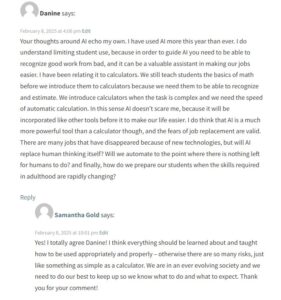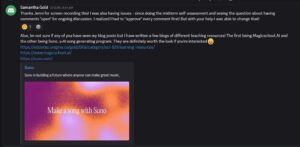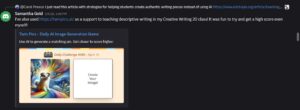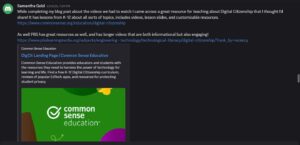How I Contributed to the Learning of Others
One of the biggest takeaways from this course was just how much we could learn with and from one another. It was more than just individual learning, it was collaborative, supportive, and deeply rooted in sharing. Throughout this course, I found myself constantly learning from my classmates diverse backgrounds and experiences, and I was grateful for the opportunity to share my own knowledge and ideas in return.
Building a Shared Space for Learning
This course felt like one big network; teachers from different places and with varying comfort levels with technology coming together to share ideas, struggles, and wins. I would place myself somewhere between mid-to-high on the tech-comfort spectrum, I use social media regularly and often integrate technology into my classroom lessons, which gave me the confidence to offer suggestions to others who were still figuring out how to bring more tech into their teaching practice.
To support others, I added a “Learning Resources” tab to my blog where I highlighted tools that could be useful in the classroom. I shared not just the tools themselves, but also how I’ve used them or how they could be adapted for different classes. I made sure to include honest personal reviews so readers could decide whether a tool might actually work for them. Some of the tools I explored were MagicSchool.AI, Suno, and Twinpics.AI.
One post in particular—my review and critical reflection on MagicSchool.AI—sparked conversations around the potential over-reliance on artificial intelligence in education. This turned into a collaborative discussion where many of us shared concerns, experiences, and strategies for teaching both ourselves and our students how to use AI effectively without losing the human connection. I thought that these resources might stop on my blogs, so I carried them into Discord and introduced them to our network of learnings through that space.
Contributing Through Discord and Class Discussions
I also made it a priority to share helpful resources in our Discord space, especially ones connected to the themes we were covering each week. For example, during our discussions on Digital Citizenship in K-12, I posted links to relevant tools and articles that could help other educators bring those conversations into their classrooms.
One moment that stands out to me was when someone mentioned working in a classroom with limited tech access. I shared an idea I’ve used in my own teaching, technology stations, which can make the most of minimal resources by rotating small groups through tech activities. Coming from a federally funded band school, I’m very familiar with navigating limited resources, and I was grateful to be able to contribute suggestions grounded in real-life classroom challenges.
I also spoke up frequently in class discussions, often drawing on my experience working in a band school to highlight the realities that can sometimes go unnoticed in provincial systems. Many classmates shared that they hadn’t realized the extent of the resource gaps we face, and we had some meaningful conversations about solutions, equity, and the power of Open Educational Resources (OERs). Being able to share my perspective and learn from others in return made the discussions feel truly valuable.
Engaging With Others’ Blogs
Another way I tried to contribute to others’ learning was by regularly commenting on blog posts. I often shared relevant influencers, teaching tools, or ideas that connected to their posts, especially when I thought they might benefit from a tech-related suggestion. Other times, I asked open-ended questions in hopes of continuing the conversation and digging a little deeper into what they shared.
What I loved most about reading other blogs was how different everyone’s learning journey was. Whether someone was diving into a brand-new skill or refining something they already knew, it was exciting to follow their progress and be part of their learning experience.
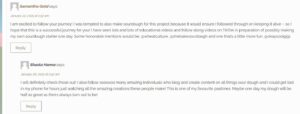
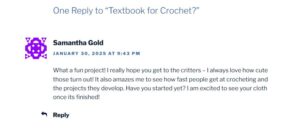
Sharing My Own Learning Authentically
Lastly, I tried to be as honest and reflective as possible in my own posts, particularly during my meal prepping project. I broke down what worked, what didn’t, how much it cost, and what I learned about myself along the way. I even had a few classmates say they were thinking about trying some of the recipes I shared! While it started as a personal project, I quickly realized how much value there was in openly sharing the messy, real parts of learning—not just the wins.


Final Reflection
Looking back, I’m really proud of how I was able to contribute to this learning community. Whether it was through Discord suggestions, blog conversations, or classroom discussions, I tried to bring in my experience, my curiosity, and my support for others. At the same time, I learned so much from everyone else. This course reminded me that collaboration is at the heart of growth—and that when we show up for each other, we all learn more.
